The European culture of bicycles
Where bicycles and active transportation are embraced as the everyday
I am back. I have been traveling for the past month. This is my first week back to reality after an eighteen-day European cycling vacation where I cycled along the Rhine River from Strasbourg, France to Cologne, Germany. You can read my tour journal on Cycleblaze. I immensely enjoy cycling in Europe.
I cycled Hungary, Austria, the Czech Republic, Switzerland, and Germany in my retirement. These countries share a common culture of bicycles and cycling. It is an eye-opening view of how bicycles factor into daily life, active transportation infrastructure, and the public’s view of bikes and cycling. Here are some observations I see from behind my handlebars in Europe.
1. Bikes as a mode of transportation.
The bicycle is perceived as a means to go to the grocery, commute to work, and perform everyday tasks. This contrasts with the American view of the bike as being a means to exercise and enjoy the outdoors.
Most American cyclists mount their bikes on the bike rack and head to a trail or parking lot to join a group or solidarity ride. I cannot recall a single instance where I saw a European vehicle with a car rack. They cycle from their front door to wherever they go.
2. Bike infrastructure is a priority.
It is common to see hundreds of bikes at train stations. Bike lanes lead to transportation hubs. Trains are equipped to carry bikes. Hotels have dedicated bicycle parking. Dedicated bike paths parallel busy roads connecting villages, towns, and cities.
Prioritizing active transportation infrastructure results in rush hours on bike lanes and bike paths. It is common to see suited commuters with smart-looking paneers heading to the office. Most students bike to school on safe streets and bike lanes.
3. Cyclists are treated with respect.
Pull up to an intersection in Europe on a bike and road traffic stops. Cars give you space and wave you on. Europeans see cyclists as peers on the road. The same applies to pedestrians. Motorists are courteous. This is likely due to the European motorist also being a bicycle owner.
4. Bikes come in many flavors.
One thing that Americans notice first when visiting Europe is the variety of bicycle types. The American obsession with sleek lightweight stylish bikes is foreign to the common European bicycle owner. Bikes are purchased for durability, usefulness, ease of use, and means of transportation.
Bikes match the needs of the cyclist. Cargo bikes are common to haul goods, groceries, and children. The typical bike is heavier and sturdier with road bikes being less common. Wire and wooden baskets are common, are front, and rear-mounted to carry goods.
5. No helmets.
European cyclists seldom wear helmets. I know you are gasping with this one. Studies have proven that wearing a helmet reduces the risk of head injuries by about 60% in case of a fall. A study shows that 1 in 5 European cyclists wear a helmet, but this varies by country and locale.
My thought is that the European cyclist is more casual, slower, and cycles more frequently. This makes them more cautious and aware of their surroundings and abilities. Add to this that more respect is given to the cyclist. They are given priority and more room when sharing roads and cycle paths.
6. Bike tourism is for everyone.
Europeans embrace a more active lifestyle than Americans. The Eurovelo bicycle route system is quite impressive. The routes are generally well-maintained and interconnected. An active lifestyle combined with this large cycling network makes vacationing by bike accessible to about anybody.
My tour on the Romantic Rhine saw many families traveling by bike. Bike touring companies, hotels, restaurants, and attractions cater to this audience. The Rhine from Mainz to Cologne makes for an excellent family tour. Towns 15-20 miles apart, castles, vineyards, orchards, and quaint villages make it the perfect family vacation destination.
Tom’s beers on the Rhine
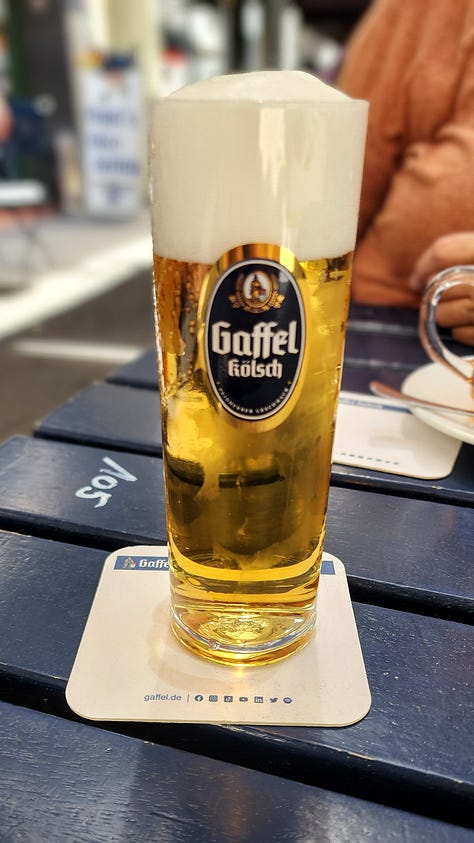

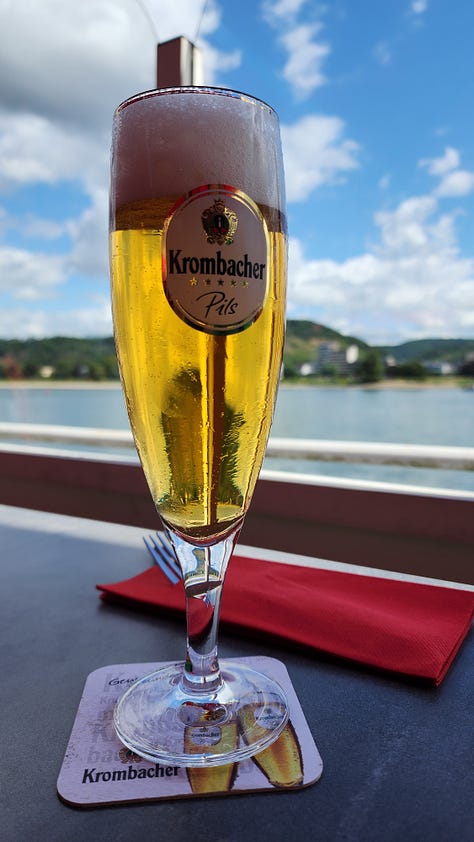
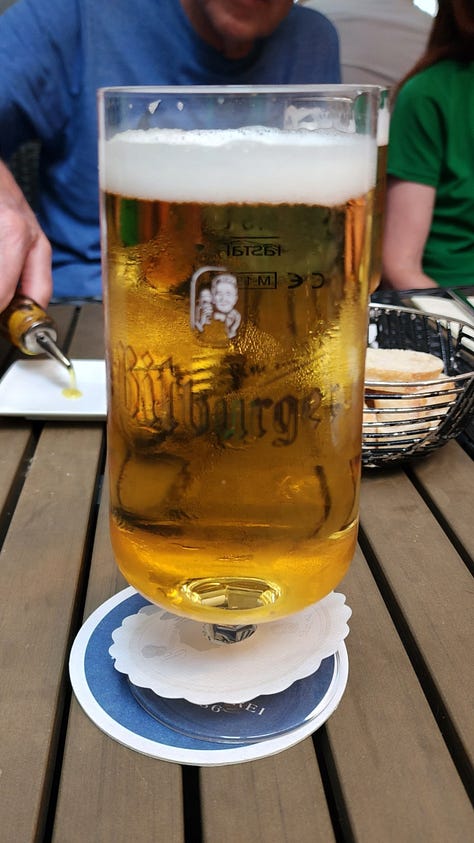
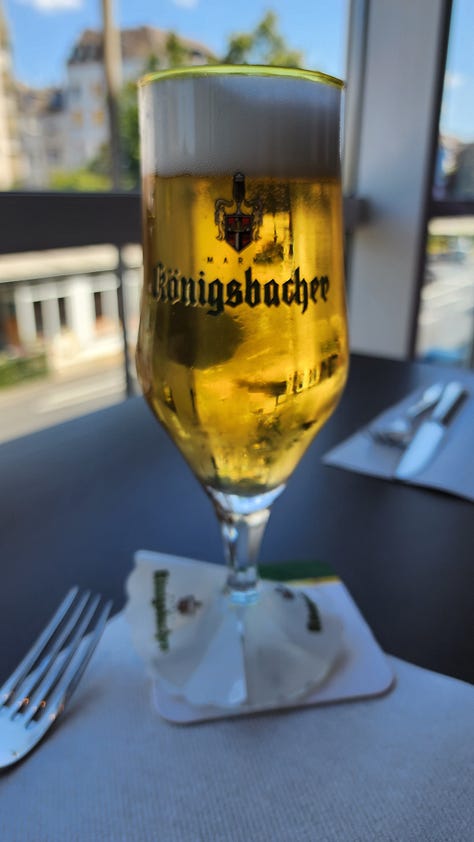


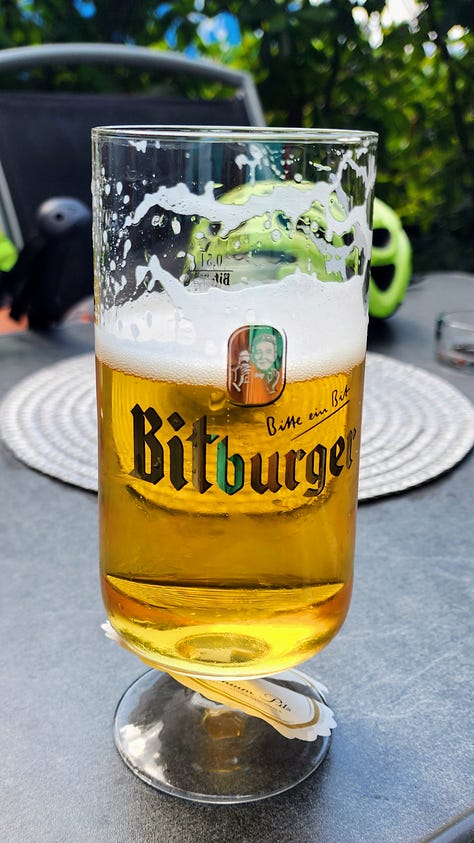
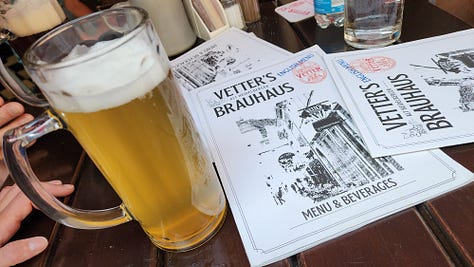
European beers are far superior to American beers. It is difficult to beat the Pilsners in the Czech Republic. That is my go-to style of brew. This tour provided me with an assortment of beers.
Starting in Strasbourg in the south, Pilsners ruled. They were like but not like Czech Pilsners. Heading north to Cologne (Koln), Kolsch became the prominent beer of choice. They are excellent!
The best thing about European beers in small villages is the price of 1 or 2 euros. Enjoy my gallery of beers on tour.
Tom on the Trails



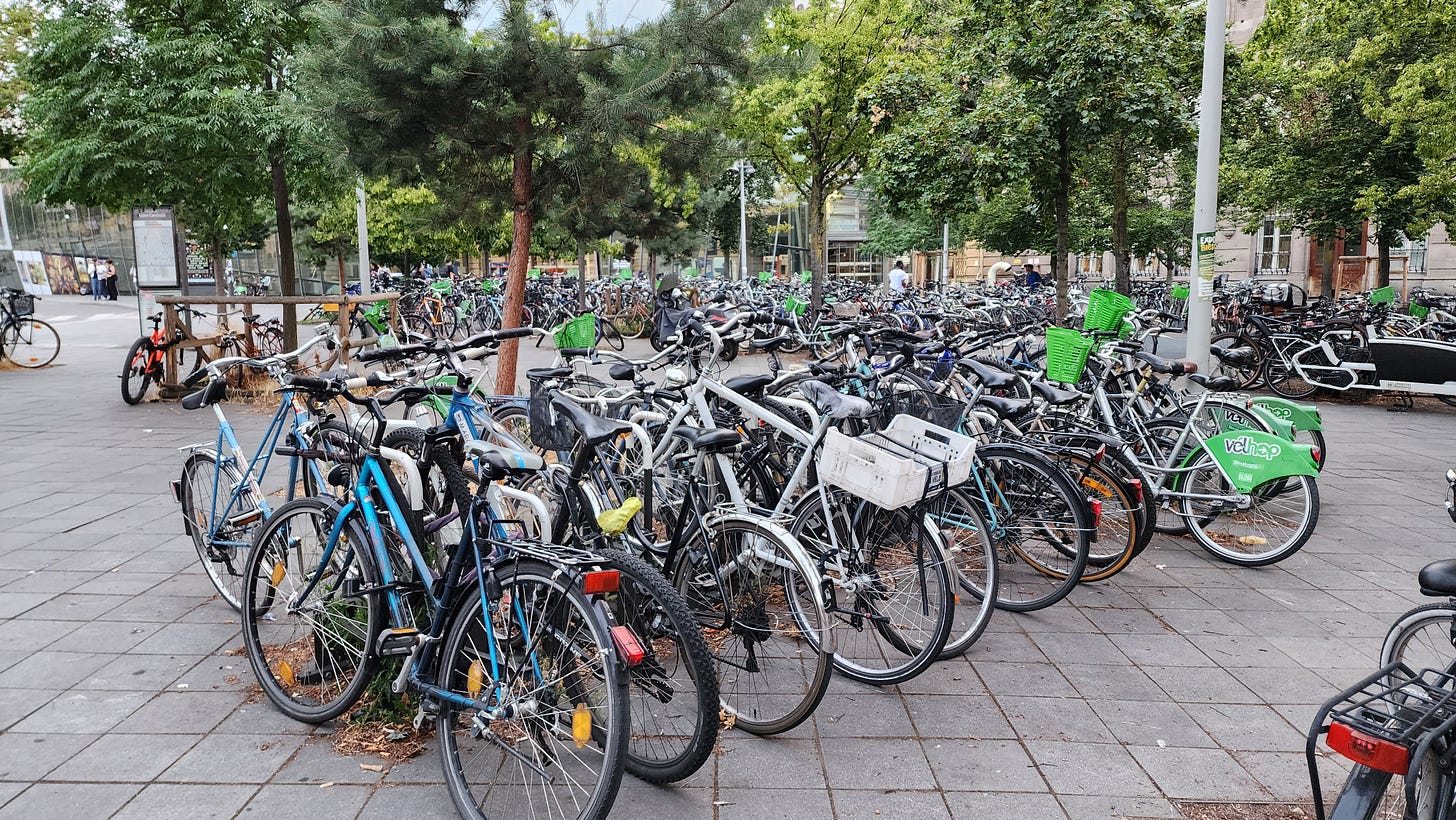

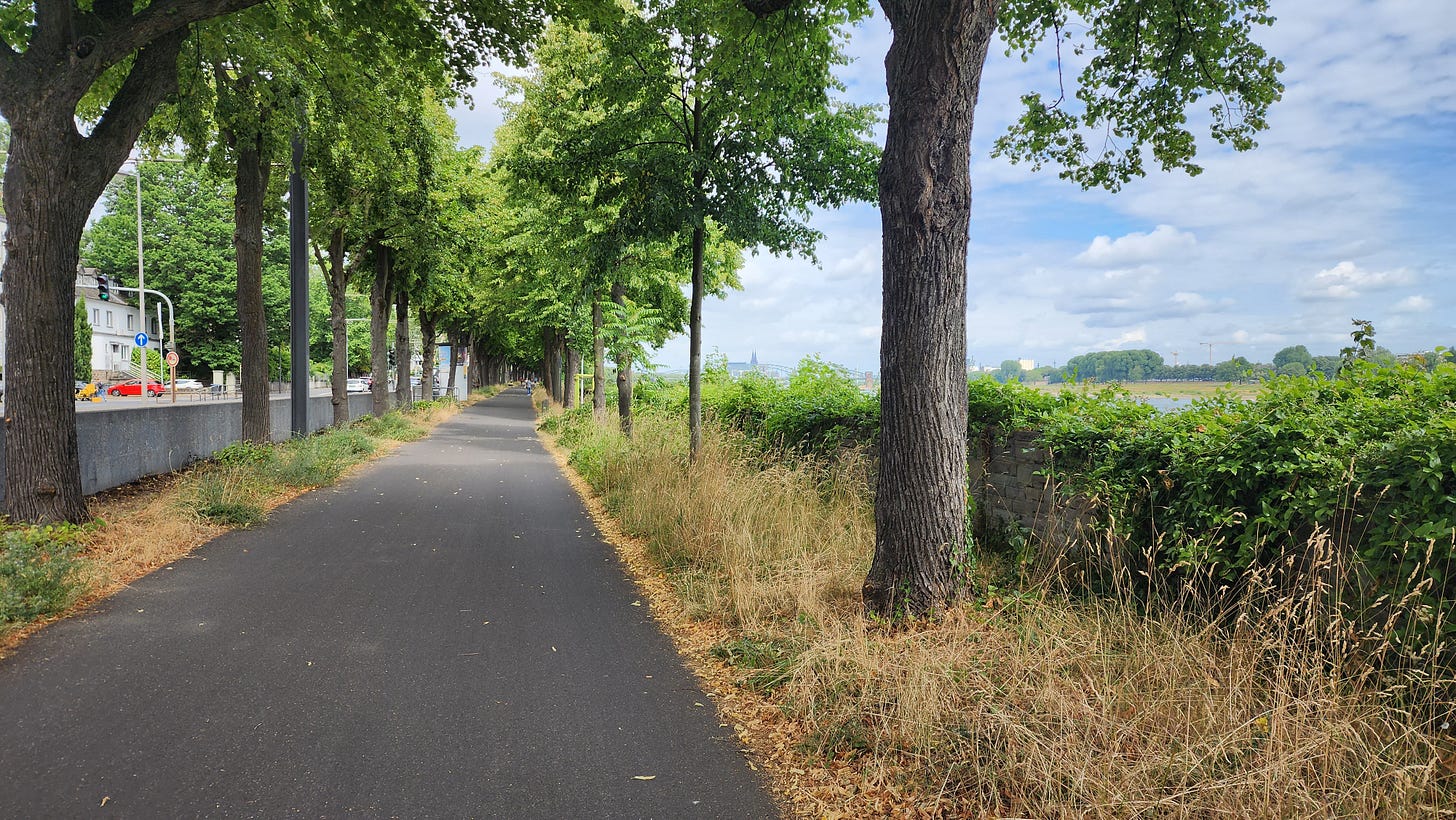
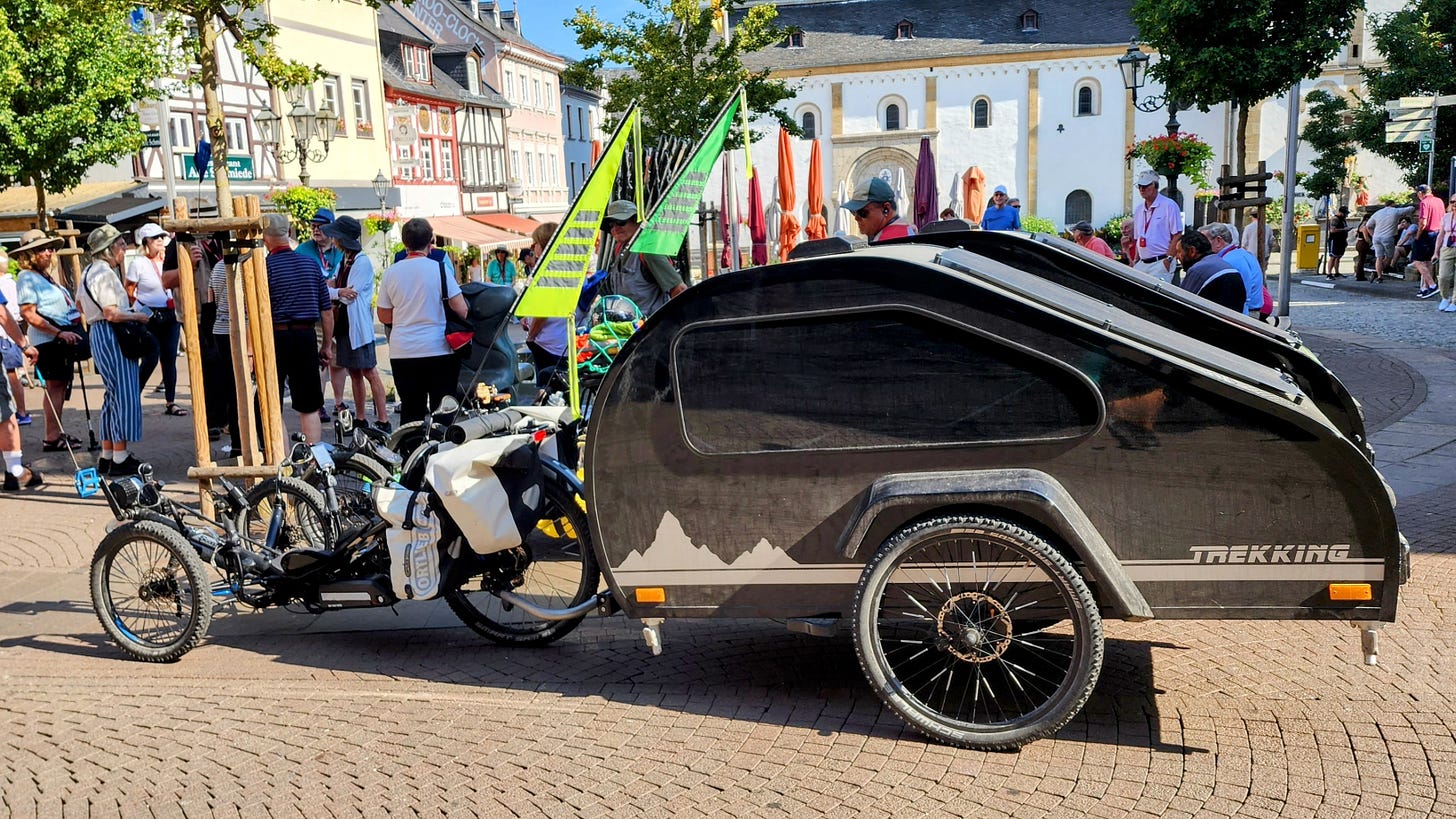


My impressions of cycling in Europe as well!
Your trip sounds and looks wonderful. I am very envious - and inspired to get planning my own trip! Thanks for sharing.